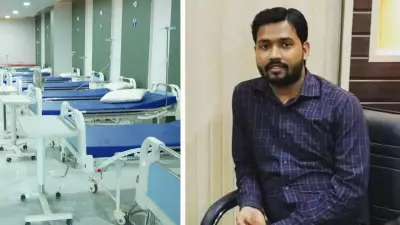
The recent stampede at the AP Venkateswara Temple that claimed multiple lives has once again highlighted a disturbing pattern of similar tragedies occurring at religious sites across India. As the nation mourns another preventable loss of life, questions arise about why such incidents continue to happen with alarming frequency.
The Anatomy of a Temple Stampede
Stampedes at religious gatherings typically follow a predictable pattern. They often occur in confined spaces with limited exit points, where large crowds gather for special occasions, festivals, or distribution of prasad. The AP Venkateswara Temple incident, like many before it, involved a sudden surge of devotees in an area that couldn't accommodate the volume of people.
Common Trigger Factors
- Rumors and panic: A single shout or false alarm can trigger mass movement
- Structural failures: Temporary barriers or railings collapsing under pressure
- Weather conditions: Sudden rain or extreme heat causing crowd surges
- VIP movements: Security protocols disrupting natural crowd flow
- Free distribution: Crowds rushing for prasad or special offerings
Historical Patterns of Religious Stampedes in India
India has witnessed numerous similar tragedies over the decades. The 2008 Jodhpur Temple stampede, the 2011 Sabarimala incident, and the 2013 Madhya Pradesh temple tragedy all share common characteristics with the recent AP Venkateswara event. Each incident revealed gaps in crowd management, infrastructure planning, and emergency response systems.
Why Temples Are Particularly Vulnerable
- Architectural constraints: Many ancient temples weren't designed for modern crowd sizes
- Seasonal variations: Normal capacity becomes dangerously inadequate during festivals
- Religious significance: Devotees often ignore safety warnings in pursuit of spiritual goals
- Administrative fragmentation: Multiple authorities managing different aspects of temple operations
Solutions and Prevention Strategies
Experts suggest several measures that could prevent future tragedies. These include implementing scientific crowd management systems, using technology for real-time monitoring, creating better infrastructure with multiple exit routes, and conducting regular safety audits of popular religious sites.
"The solution lies in combining traditional devotion with modern safety protocols," says a crowd management expert. "We need to treat crowd safety as an engineering and management science, not just a logistical challenge."
Technology to the Rescue
Modern solutions like AI-based crowd monitoring, drone surveillance, and mobile app-based crowd control are increasingly being recommended for major religious sites. These technologies can help authorities anticipate dangerous crowd build-ups and take preventive action before situations turn critical.
As India continues to host some of the world's largest religious gatherings, the need for comprehensive safety frameworks becomes increasingly urgent. The AP Venkateswara Temple tragedy serves as another painful reminder that faith and safety must coexist harmoniously.





